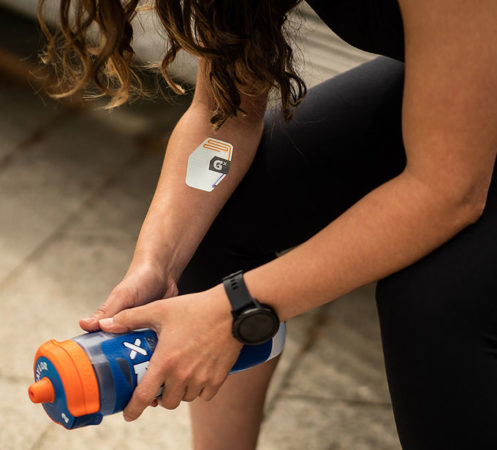Sweat tech alerts athletes when to rehydrate — and with what
Wearable sensors measure moisture and minerals lost during exercise

After running around a soccer field, kids can really work up a sweat. Technology may soon tell these athletes which electrolytes they need to replenish.
nycshooter/iStock/Getty Images Plus
Exercise affects the body in many ways. Our heart beats faster. Our lungs work harder. Our skin gets sweaty. And that sweat does more than cool an overheated body. It also carries away valuable moisture and minerals. Today’s fitness tech is now working to gauge that loss of water and nutrients. The goal: To help athletes know when to replenish both — or risk losing their competitive edge.
John Rogers is a materials scientist and biomedical engineer. He works at Northwestern University in Evanston, Ill. There, he uses engineering to tackle health issues. That includes pushing health tech’s boundaries well beyond the Fitbit.
That next frontier is a different type of wearable device. “It captures tiny amounts of sweat as it emerges from the skin,” says Rogers. These devices measure how much someone sweats. They also analyze what essential minerals the body is losing in that sweat. Rogers began working on such devices more than four years ago.

Electrolytes [Ee-LEK-troh-lytes] are a key group of minerals to track, he notes. (As their name suggests, electrolytes have the ability to carry an electric current.) Plain water rehydrates someone who’s been sweating. But Gatorade and other sports drinks do more — they also replenish important electrolytes. These may include sodium, chloride and potassium. Such minerals keep nerves, muscle and other tissues healthy. They also help control blood pressure.
Rogers has been working with Gatorade’s maker to develop the sweat sensor. Worn like an adhesive bandage, this skin patch looks simple on the outside. Inside, it’s anything but simple.
Tiny channels about the width of a human hair collect sweat. They include color-changing chemicals that react with electrolytes. The colors of this “lab on the skin” tell athletes which electrolytes they should replenish. The sensor is attached to only one spot – an arm, calf or the forehead. But it shows “what’s going on in the entire body,” Rogers says.
He and his team described an improved version of the sweat sensor in the December 2019 Nature Communications. That patch alerts users with a skin sensation when they have lost a certain amount of sweat.
The researchers have tested the sensor in hundreds of athletes. Gatorade plans to start selling it in late 2020, says Rogers. Knowing when to get a drink— and what it should contain — will help athletes achieve their peak performance. And it will help the rest of us stay healthy when we work out.

Educators and Parents, Sign Up for The Cheat Sheet
Weekly updates to help you use Science News Explores in the learning environment
Thank you for signing up!
There was a problem signing you up.
From sports . . . to medicine
Rogers’ plans for those skin sensors don’t stop at sports. Sweat contains traces of many chemicals that doctors usually measure in blood. These include glucose (a simple blood sugar) and lactate. (Muscle cells turn glucose into lactate.) Our body makes these compounds in different chemical reactions.
Sweat is much easier to capture than blood. A “lab on the skin,” says Rogers, could deliver results faster than a hospital lab — and at a lower cost. That’s why his team is testing which other chemicals of medical interest the sensor might measure. For example, tracking glucose might help people with diabetes manage their disease.







